When the Cosmos Speaks in Fibonacci: 3I/ATLAS, My Father, and the Geometry of Reality
Some emails arrive and vanish. Others rearrange the architecture of your mind.
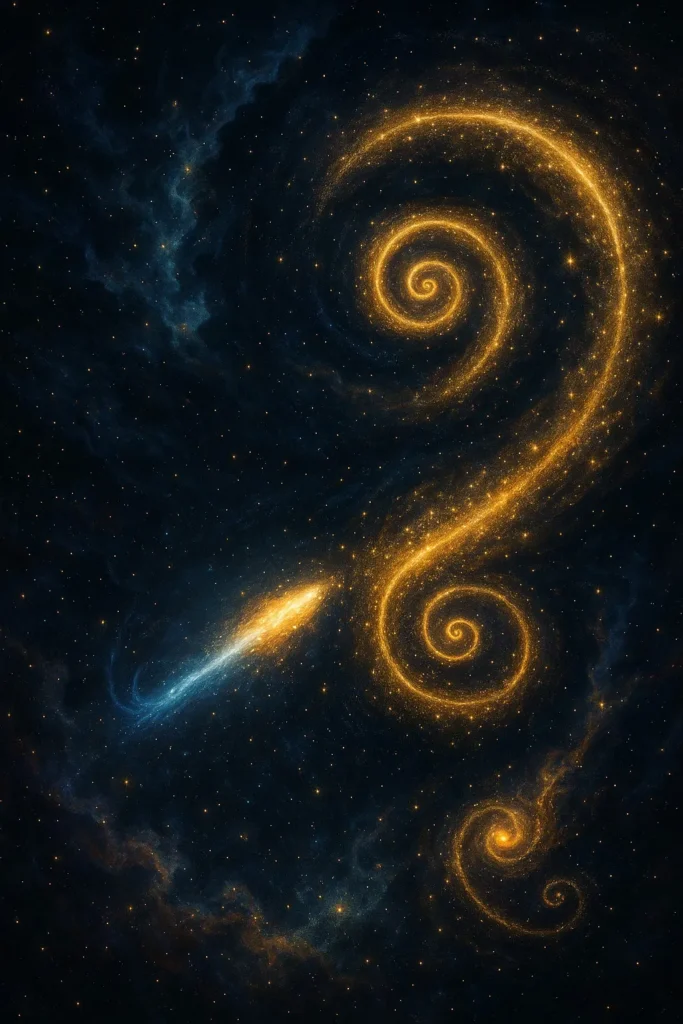
Some emails arrive and vanish. Others rearrange the architecture of your mind.
My father—Sungchul Ji, Ph.D., Emeritus Professor of Theoretical Cell Biology at Rutgers—sent the latter kind this morning. No fanfare. No breathless capitals. Just the measured tone of a scientist who has spent fifty years watching nature reveal her patterns: the interstellar object 3I/ATLAS had emitted electromagnetic signals at 1.42 GHz, the hydrogen spin-flip frequency—the universe’s most fundamental hailing channel. And the pulses, he noted, allegedly carried structure: Fibonacci sequences, golden spirals.
He did not frame it as proof of aliens. He framed it as a question about intention itself.
If the IRVSE intentionality postulate applies to these Fibonacci-like signals emitted by 3I/ATLAS, it would be logical to infer that its behaviors embody the intentionality of an agent—including the Universe—executing goal-directed, teleonomic action.
Translation: If the signal is real and if its structure is as reported, we are no longer talking about a rock. We are talking about intention expressed as pattern. Purpose rendered in geometry. Selection speaking through form.
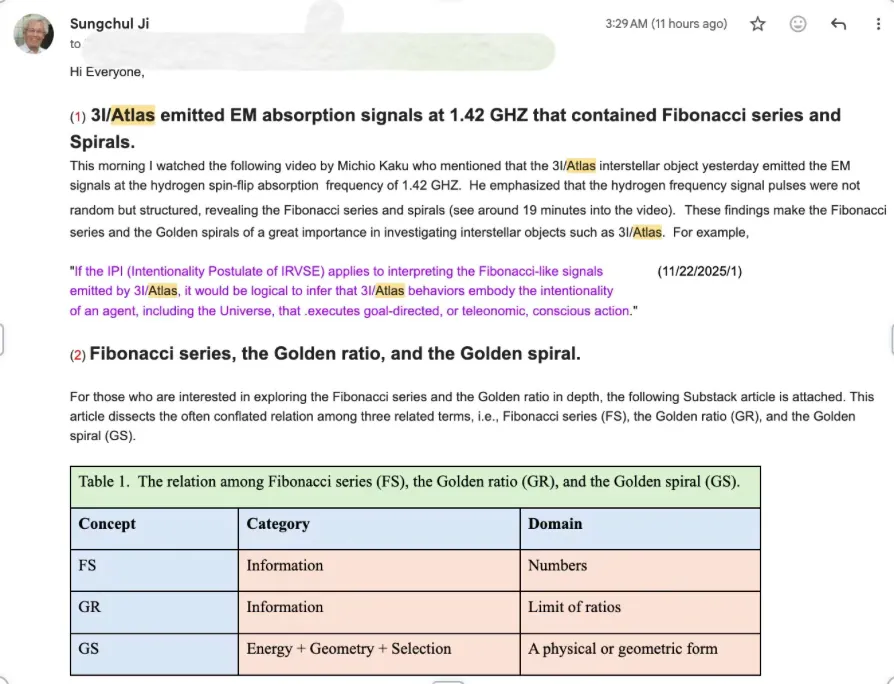
For someone like me—whose public work anchors in health sovereignty, medical freedom, and political resistance, but whose private fascinations have always circled cosmology, subtle fields, and the metaphysics of biology—this was not a gentle nudge. It was a rupture. A crack in the boundary between what I write about and what I’ve always known lives beneath it.
When an object from interstellar space enters our solar system and appears, even speculatively, to speak in the same mathematical language that scaffolds biological growth, neurological development, and perhaps consciousness itself, you pay attention. You stop what you’re doing. You ask what it means.
This essay is my attempt to answer—or at least to sit with the question long enough to see its shape. It braids together:
- NASA’s official story about 3I/ATLAS,
- the charged public debate between Avi Loeb and Michio Kaku,
- my father’s unconventional but rigorously argued interpretation of Fibonacci patterns as markers of selection,
- and my own work on torsion and scalar fields as the hidden architecture linking planetary dynamics to biological and psychological processes.
Because within that framework, an interstellar visitor like 3I/ATLAS is not merely a visual spectacle blazing across our telescopes. It is a scalar-torsion event entering a coherent field. A perturbation in the fabric. And fabric, when disturbed, ripples.
That has consequences.
Three Stories About the Same Object
Let’s begin with the simplest layer: what is 3I/ATLAS, officially?
NASA’s Story: An Ancient, Interstellar Comet
According to NASA and the constellation of mainstream coverage orbiting it, 3I/ATLAS is the third known interstellar object to visit our solar system—following the enigmatic ‘Oumuamua (1I) and the more familiar Borisov (2I). Discovered in mid-2025 by the ATLAS survey, it earned its “interstellar” designation through the clarity of its hyperbolic orbit: a trajectory that does not loop around the Sun but cuts through, a visitor that came from elsewhere and will leave again.
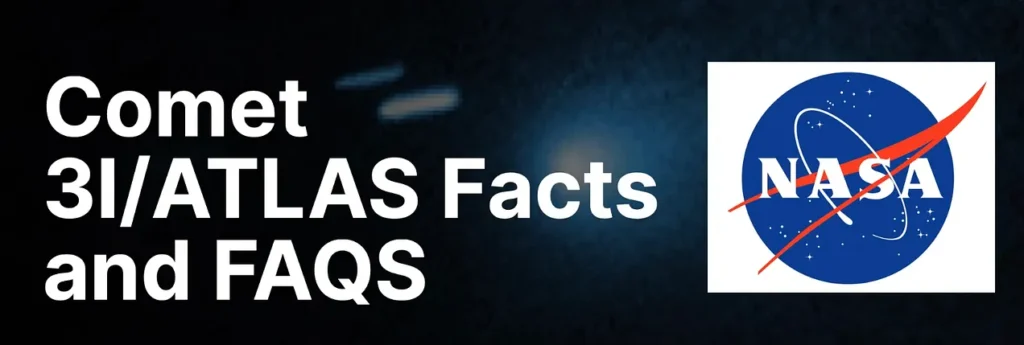
The official portrait:
- Extremely old—possibly older than our solar system by several billion years.
- Compositionally “comet-like,” bearing water, carbon dioxide, carbon monoxide, cyanide, and a surprising concentration of nickel.
- Active, as comets tend to be: coma, tail, jets—behavior that, in NASA’s telling, fits comfortably within the broad family of cometary expression
Recent press conferences, explainers, and carefully worded articles all push one clear message:
3I/ATLAS is a comet. Not a probe. Not a ship. A comet.
Radio astronomers have reported the first radio detections from the object—signals consistent with hydroxyl (OH) emissions, a standard signature when cometary water sublimates and fluoresces in solar radiation. These detections have been marshaled to argue that 3I/ATLAS is decisively, reassuringly natural.
In this reading, 3I/ATLAS is rare but fundamentally familiar: an ancient, icy time capsule from another star system, drifting through on a journey that began before Earth solidified.
Avi Loeb’s Story: Twelve Anomalies and a Conversation We Refuse to Have
Harvard astrophysicist Avi Loeb, whose Medium writings I have been following closely, finds that story unsatisfying—not because he knows better, but because he thinks we’re smoothing over what we don’t understand.
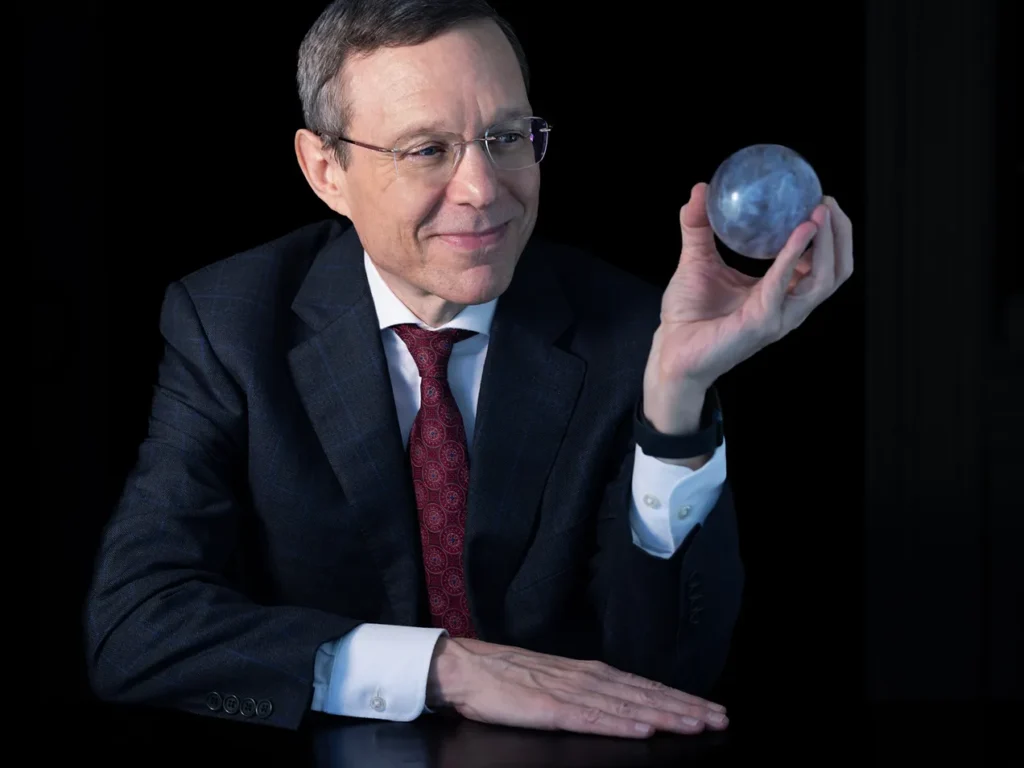
Loeb has spent months cataloging at least a dozen anomalies in the observational data: unusually large inferred mass, strange jet behavior, non-gravitational accelerations that don’t match standard comet models, unusual nickel-to-iron ratios, and an orbit suspiciously well-aligned with the plane of our solar system—a geometric coincidence that, he notes, conveniently makes the object easy for many observatories to track.
He has publicly accused NASA of soft-pedaling or outright ignoring the weirdness, including allegedly withholding a high-resolution image from the Mars Reconnaissance Orbiter that might clarify the object’s true structure.
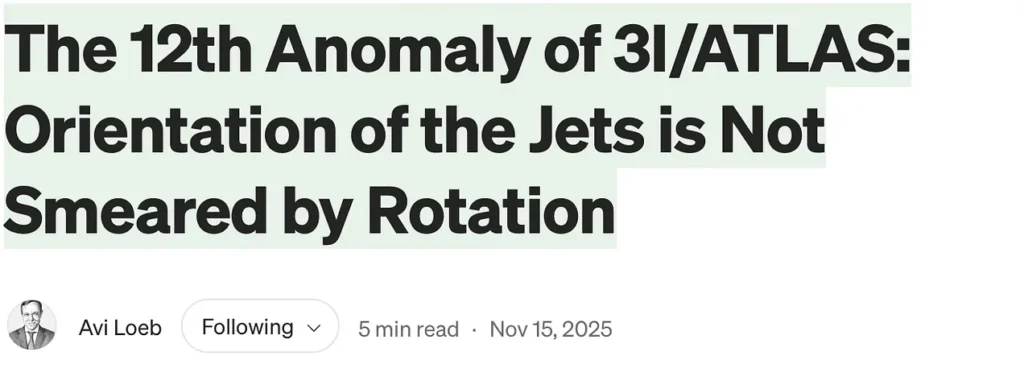
Loeb’s core complaint is not simply, “It’s aliens.” It’s more surgical:
Science, he argues, is showing a strong institutional bias toward classifying everything as familiar—toward folding anomalies back into the comfort of “just another comet.” The weirdness becomes an inconvenience rather than an invitation.
For him, the most honest scientific stance is:
- This object looks comet-like in some ways.
- But it does not comfortably fit the standard template.
- And some of its properties might be better explained if we allowed for the possibility of technology.
Not “definitely technology.” Not “ignore the comet evidence.” But: let the anomalies breathe.
Michio Kaku’s Story: A 1% Door Left Ajar
Theoretical physicist Michio Kaku, meanwhile, is walking a more delicate line. He’s doing something closer to cultural diplomacy than pure science.
In recent interviews, Kaku acknowledges:
- That 3I/ATLAS is older than our solar system.
- That its chemical composition and trajectory are atypical.
- That we don’t yet have the full story.
But he ultimately assigns only about a 1% probability that the object is guided by alien intelligence. For now, he says, it looks like a very old, somewhat strange comet. We shouldn’t prematurely declare it a starship. Extraordinary claims, he reminds us, require extraordinary evidence—and the evidence so far, while intriguing, is weak.
Other interviews echo this posture: Kaku grants that we live in a universe where intelligent life is plausible, even probable, but insists we wait for the fireworks before ringing the bells.
So we have:
- NASA: “It’s a comet. Relax.”
- Loeb: “It’s anomalous. Stop pretending it’s not.”
- Kaku: “It’s probably a comet. But let’s keep the door 1% open.”
That alone would justify fascination. The spectacle of science arguing with itself over a visitor from another star is rare enough to matter.
But then a fourth voice arrived—via my father. And that’s when the conversation became something else entirely.
For readers who want to explore my father’s full theoretical treatment, including the IRVSE selection principle and its implications for Fibonacci-like cosmic signals, his recent paper provides the foundational geometry behind this shift.
(See: “From Hydrogen Pulses to Conscious Geometry: 3I/ATLAS and the Geometry of Reality,” Nov 5, 2025.)
A Fourth Voice: My Father’s Email
The email arrived in the tone of a casual lab note:
“This morning I watched a video by Michio Kaku mentioning that the interstellar object 3I/ATLAS emitted EM signals at the hydrogen spin-flip absorption frequency of 1.42 GHz…”
The 1.42 GHz hydrogen line is not arbitrary. It’s the frequency at which neutral hydrogen atoms flip their electron spin—a spectral signature so fundamental, so universally abundant, that SETI researchers have long considered it the natural hailing channel of the cosmos. If you wanted to announce yourself to a hydrogen-rich universe, 1.42 GHz is where you’d shout.
What seized my father’s attention wasn’t merely that radio emission at this frequency had been reported—mainstream outlets have covered radio signals from 3I/ATLAS, though they attribute them to hydroxyl chemistry and other natural processes. It was the claim—circulating in at least one online video—that the pulses detected at or near this line were non-random and encoded with Fibonacci patterns and spirals.
Now, to be clear and responsible:
- I am not claiming this Fibonacci encoding has been confirmed by NASA or peer-reviewed analysis.
- It appears, at this stage, in the borderlands between speculative journalism, alternative science media, and online commentary.
- Mainstream coverage of the radio signal emphasizes spectroscopic signatures of water-related chemistry, not mathematical codes.
But my father’s response to these claims—if they hold up—is uniquely rigorous, because he has spent decades studying exactly the relationship they invoke: the Fibonacci sequence, the golden ratio, and the golden spiral as they appear in biological structures, physical systems, and the geometry of reality itself. (Here is one paper where he discusses the Fibonacci sequence and golden ratio)
His article, “How Fibonacci, Teleology, and the Geometry of Reality Reveal a Hidden Principle of Cosmic Design,” is one of the most precise dissections I’ve seen of how these three often-conflated ideas actually differ, and why that difference matters for teleology, intentionality, and the possibility of intelligence embedded in form.
Let’s unpack his framework. Because it is central to understanding why a Fibonacci-encoded signal, if real, would not just be interesting. It would be cosmically significant.
Fibonacci, Golden Ratio, Golden Spiral: A Hidden Triad
In the popular imagination, “Fibonacci” has become mystical wallpaper—something you slap onto seashells, galaxies, Bitcoin charts, and TED talks to signal depth without precision.
My father, being my father, is unimpressed with sloppy mysticism.
In his article, he carefully distinguishes three entities that most people collapse into one:
1. Fibonacci Series (FS)
- A sequence of numbers generated by simple recursion: each term is the sum of the previous two.
- Category: Information—pure abstraction, numbers floating in mathematical space.
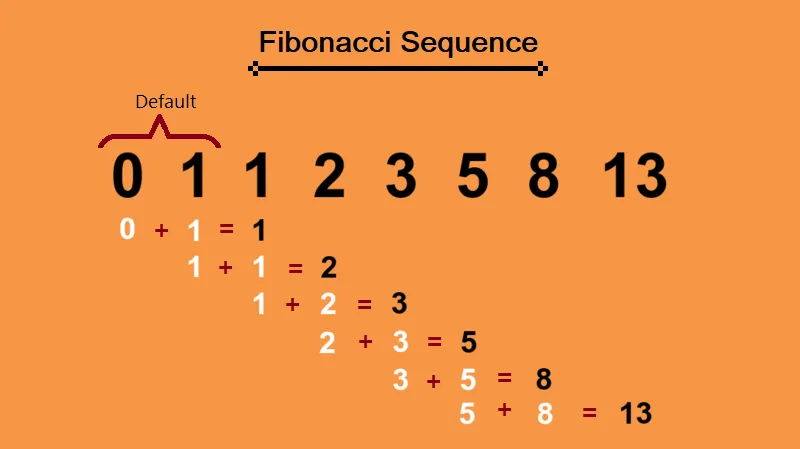
2. Golden Ratio (GR)
- A number (approximately 1.618) that emerges as the limit of the ratios between successive Fibonacci terms.
- Category: Information—a convergent limit, a mathematical attractor.
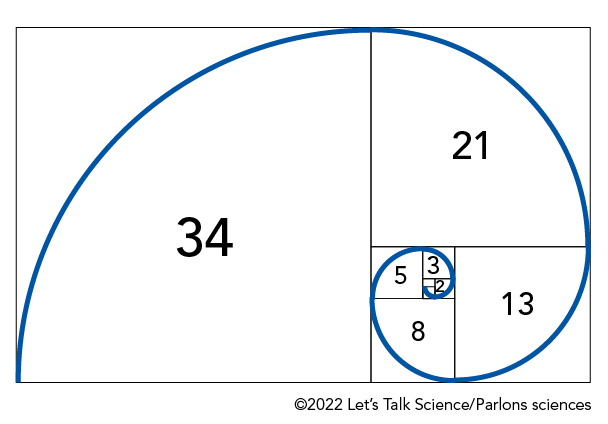
3. Golden Spiral (GS)
- A geometric curve, often drawn by nestling rectangles with Fibonacci-proportioned sides and then connecting their corners with a smooth arc.
- Category: Energy + Geometry + Selection—an actual form that occupies space, carries energy, and must be chosen from an infinity of possible shapes.
He summarizes this in a deceptively simple table:
FS lives in the space of abstract numbers.
GR lives in the space of ratios and limits.
GS lives in the space of actual forms—things that occupy space, carry energy, and must be selected from an infinite field of alternatives.
This distinction allows him to make a crucial, often-overlooked point:
The Fibonacci sequence does not automatically generate the Golden Spiral.
You can create Fibonacci rectangles—those familiar nested tilings whose side lengths follow 1, 1, 2, 3, 5, 8, 13—but you can draw infinitely many different curves connecting the corners: circular arcs, parabolas, jagged noise, straight line segments, grotesquely distorted shapes. Nothing in the pure mathematics of FS or GR forces the emergence of a Golden Spiral.
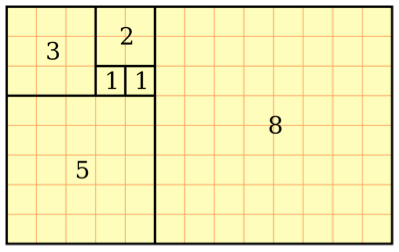
To get the Golden Spiral—the smooth, efficient, growth-compatible form we see in nautilus shells and spiral galaxies—reality must choose.
He names this extra step Selection—step (V) in his IRVSE principle:
Iterative Reproduction with Variation and Selection by Environment.
- Steps I–IV (iteration, reproduction, variation) can give you Fibonacci rectangles and vast possibility spaces.
- Step V—Selection—chooses a particular curve, a particular form, a particular path through that space.
In the language of philosopher Charles Sanders Peirce:
- Firstness = raw possibility, qualities, the unmanifest.
- Secondness = brute facts, actual configurations, collisions.
- Thirdness = law, meaning, habit, selection—the dimension in which patterns are chosen and stabilized.
The Golden Spiral, in this view, is not just a mathematical curiosity. It is a Thirdness phenomenon: evidence that somewhere in the system, something resembling preference, teleology, or purposive selection is operating.
My father then extends this into his Geometry of Reality (GOR) framework, which posits that the universe is structured along three axes:
- X-axis: Energy/Matter
- Y-axis: Information/Mind
- Z-axis: Spirit/Consciousness/Selection
Within this picture:
- The Golden Ratio lives in the XY plane—where energy and information interact through mechanical and computational processes.
- The Golden Spiral occupies the full XYZ volume—where selection, consciousness, or spirit enters the picture.
Mathematically:
- FS → GR is an automatic algebraic limit. No choice required.
- FS → GS requires the Z-axis: selection. Something must prefer this curve over that one.
This is where his email about 3I/ATLAS becomes more than a curiosity.
If you are steeped in this language, then the claim that an interstellar object is emitting Fibonacci-structured signals at a privileged cosmic frequency is not just “weird.” It is suggestive of Thirdness intruding into our astronomical data—of selection appearing where we expected only brute mechanics and chemical drift.
Again, I emphasize: the empirical reality of this specific encoding remains contested and unconfirmed in mainstream science. NASA’s radio-signal analysis currently leans toward standard comet chemistry.
But the conceptual door my father opens here is profound:
Even if 3I/ATLAS turns out to be entirely natural, the episode forces a deeper question: how do we distinguish between mere number patterns and genuine signatures of selection, teleology, or intelligence in the cosmos?
That question sits at the heart of both SETI and biology—and, interestingly, at the heart of my own work on bridging the chasm between astrophysics and astrology through torsion and scalar fields.
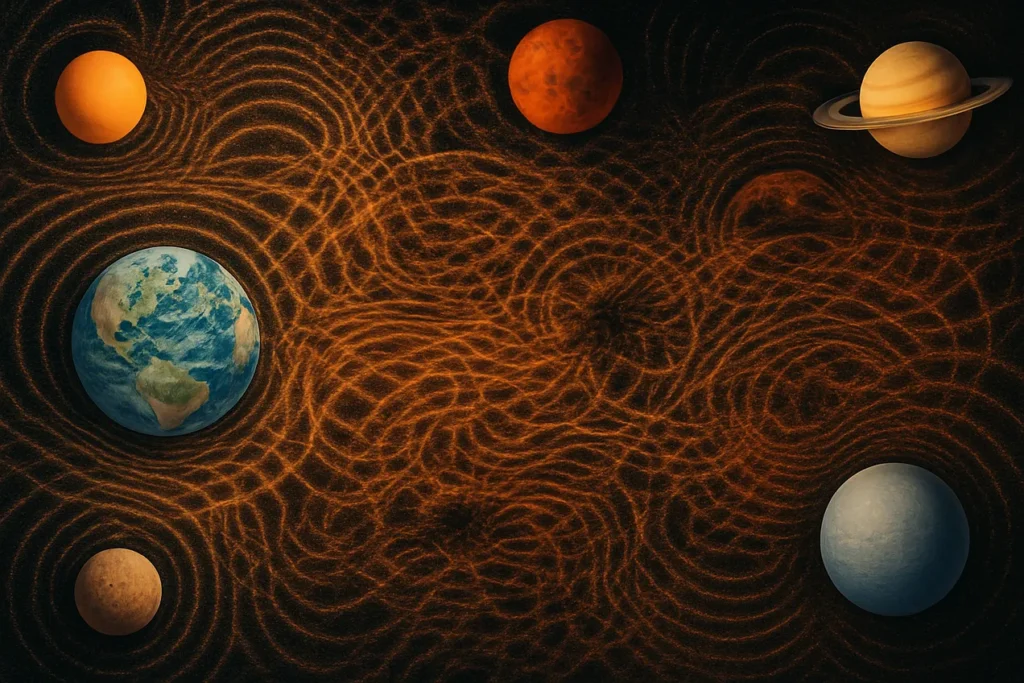
From Planets to Fields: My Torsion/Scalar Lens
Most people know my work through the lenses of health freedom, natural medicine, and political sovereignty. But underneath that public current runs a quieter, more speculative inquiry:
Why do planetary and astrophysical cycles seem to correlate so consistently with biological and psychological phenomena on Earth?
Conventional astrophysics gives us gravity and electromagnetism as the primary actors—the forces that shape orbits, heat atmospheres, and drive solar storms. Astrology, in its traditional form, invokes symbolic, archetypal correspondence that most physicists dismiss as pattern-seeking run amok.
My own exploration has centered on a third possibility:
- That there exist subtle, non-electromagnetic field structures—often described as torsion fields, scalar fields, or nonlocal information fields—
- which couple large-scale astrophysical dynamics to biological, ecological, and psychological processes in ways that do not fit current force-based models.
In this view:
- Planets, stars, and galaxies are not just masses moving through empty space.
- They are coherent torsion structures—organizing centers in a fabric where spin, information, and geometry are as fundamental as mass and charge.
The “influences” we traditionally call astrological could then be understood as interference patterns in a scalar-torsion field, modulating:
- biological rhythms,
- subtle physiological regulation,
- collective mood,
- and the probability landscape of events.
You don’t have to accept every detail of torsion physics to appreciate the core intuition:
The universe might be more like a resonant, informational medium than a collection of billiard balls in a void.
Within this framework, when a new, massive, coherent, interstellar structure enters our solar system, we are not merely observing a distant point of light. We are experiencing a reconfiguration of the field—a perturbation in the very medium through which planetary, biological, and psychological processes unfold.
And if that structure is not just inert but possibly teleonomic—shaped by selection, carrying encoded information, or even technological—then the implications amplify dramatically. You can dive deeper into this topic below.
Reimagining Astrology as Cosmic Resonance: An Integrated Introduction

At-a-Glance
3I/ATLAS as a Scalar-Torsion Event
Let’s bring these threads together.
From a purely Newtonian perspective, 3I/ATLAS is:
- a modest risk (its closest approach is roughly 1.8 AU, about 170 million miles—posing no direct impact threat),
- a scientific opportunity (a chance to study ancient, pristine material from another star system),
- and a visually stunning but otherwise remote visitor.
From a torsion/scalar perspective, the calculus changes:
- The key variable is not only distance but coherence and novelty.
- A previously unknown coherent field structure has crossed the heliopause and is now interacting with the Sun’s magnetosphere, the heliospheric current sheet, the orbital dance of planets, and—through them—the finer weave of biological and consciousness processes embedded in those fields.
If torsion fields are non-attenuating or only weakly decaying with distance—as some theories propose—then the patterning of 3I/ATLAS matters in ways conventional models don’t track. Its spin, shape, compositional asymmetries, and internal geometry become variables in a larger equation. Indeed, just as planetary bodies influence one another, and form a massive, interconnected, field of interference patterns and nodes and antinodes, 3I/ATLAS is already interpenetrating and affecting human consciousness, certain individuals (like my father, me, and YOU, who is reading this) more than others.
Now layer my father’s framework on top:
- If the object’s behavior—jets, tail dynamics, radio emissions—shows statistical signatures of selection,
- and if some of those signatures align with Fibonacci and golden-spiral structures that we know are energetically efficient and growth-compatible in biological systems,
- then we might be looking not only at a torsion source but at a torsion-encoded message or field template.
Even if the “message” is not intentional in a human sense, nature itself may be using Fibonacci-like codes as a kind of compression format for efficiency, stability, and scalability—the way DNA encodes information in four letters, or the way fractals encode infinite complexity in finite rules.
From this vantage, the entry of 3I/ATLAS is:
Not a marginal astronomical curiosity, but a large-scale field event with potentially systemic implications.
Those implications might be subtle. They might show up as:
- shifts in collective mood and perception,
- increased frequency of certain kinds of synchronicity,
- biological or ecological anomalies,
- or alterations in the “background noise” of human consciousness and technological systems.
And yes, this sounds speculative. It is. But everything about 3I/ATLAS is already living in the boundary layer between known and unknown. The question is not whether we speculate, but how conscious and rigorous we are about the frameworks we bring to that speculation.
Science, Teleology, and the Fear of Selection
One of the subtexts running through the Loeb–NASA–Kaku triangle is an old philosophical tension:
Is the universe fundamentally mechanistic—governed by blind laws acting on dumb matter?
Or is there some teleonomic dimension—a tendency toward meaningful form, self-organization, and selection?
Mainstream physics, especially in its public posture, leans hard toward the first. Teleology has been treated as a forbidden concept, a Trojan horse smuggling in theology or anthropocentrism. Science, we’re told, progressed precisely by exorcising purpose from nature.
But modern science keeps tripping over phenomena that look disturbingly like teleology:
- the stubborn efficiency, robustness, and directionality of self-organizing systems,
- the apparent fine-tuning of constants and initial conditions required for life,
- the fractal recurrence of certain patterns—vortices, spirals, nested hierarchies—across wildly separated scales.
My father’s IRVSE principle is one attempt to articulate a non-mystical, rigorously defined teleology:
Nature, he suggests, operates by Iterative Reproduction with Variation and Selection by Environment, from molecules to cells, from organisms to ecosystems, and perhaps from stars to galaxies.
In his broader work on Self-Organization as the Ultimate Variational Principle of Nature and the Gnergy Principle of Organization, he argues that the universe is biased toward states that optimize certain constraints—an idea that resonates with contemporary theories of free energy minimization, information geometry, and complexity science.
Seen through that lens, NASA’s insistence that 3I/ATLAS is entirely ordinary looks less like empirical certainty and more like epistemic risk management:
- If they acknowledge teleonomic hints, they risk opening a Pandora’s box of theological, philosophical, and political questions.
- If they dismiss anomalies, they keep the narrative simple, the budget line stable, and the public reassured.
Loeb’s role—whether you agree with his specific inferences or not—has been to insist that anomalies deserve to be named, not buried. That the job of science is not to comfort but to confront what we don’t yet understand.
My father goes one step further: he insists that we need a formal language for talking about these anomalies—a way to distinguish:
- patterns that arise from mechanical necessity (like the spacing of crystal lattices),
- patterns that arise from iterative variation and selection (like the phyllotaxis of a sunflower),
- and patterns that may reflect intentional, high-level agency (biological or otherwise).
The Fibonacci / Golden Spiral distinction is his way of making that cut precise.
And this, to me, is where health, consciousness, and interstellar objects finally converge.
From Cells to Comets: One Pattern, Many Scales
Why does someone who writes about nutrition, immunity, censorship, and sovereignty suddenly care so much about a far-off interstellar visitor?
Because the geometry of 3I/ATLAS—if the emerging anomalies hold—echoes the geometry of life itself.
In biology, Fibonacci and golden-spiral structures appear everywhere:
- the phyllotaxis of leaves spiraling around a stem,
- the arrangement of seeds in a sunflower head,
- the coiling of shells, horns, and hurricanes,
- even in aspects of cellular and molecular organization.
The usual explanation is that these patterns are energy-efficient, space-filling, and growth-compatible—they allow organisms to do more with less, to distribute resources evenly, to avoid destructive interference as they grow.
My father’s contribution is to say:
These patterns are not just byproducts of physics. They arise when systems iteratively explore possible configurations and then select those that best satisfy their constraints—energetic, informational, survival-oriented.
This is as true in cell biology as it may be in cosmological pattern formation.
If an interstellar object shows similar patterning in its field behavior or information emissions, then we face a provocative fork:
- Either the universe is so deeply self-organizing that the same teleonomic principles shape cells and comets alike, as scale and type invariant features of the entire universe.
- or some portion of cosmic structure is intentionally engineered—by civilizations that learned to harness these principles consciously.
Either way, the gap between health and cosmology shrinks.
The same geometry may be at work in:
- the way your mitochondria optimize energy flows,
- the way your nervous system organizes information,
- the way ecosystems balance competition and cooperation,
- and the way an interstellar object navigates the scalar-torsion landscape of a galaxy.
From this vantage, todays’ Substack is not “changing topics.” It is zooming out.
The body is a field. The community is a field. The solar system is a field. And now, a visitor from beyond that field has entered—and we’re arguing about whether it’s allowed to be interesting.
What I Am (and Am Not) Claiming About 3I/ATLAS
At this point, precision matters. Here is what I am not claiming:
- I am not asserting that 3I/ATLAS is an alien spacecraft or probe.
- I am not endorsing every sensational headline or YouTube narration about Fibonacci messages from the stars.
- I am not claiming that mainstream radio detections have conclusively shown non-random, intelligently encoded patterns. Current official analyses emphasize natural molecular emissions.
Here is what I am claiming:
1. 3I/ATLAS is objectively unusual.
Its age, trajectory, chemical anomalies, and mass already set it apart from typical comets, even within NASA’s own data.
2. The scientific conversation about it is polarized.
NASA leans toward minimizing novelty; Loeb pushes to foreground anomalies; Kaku sits in cautious middle ground, publicly assigning a non-zero but heavily discounted probability to intelligence.
3. There are emerging reports of structured radio signals at frequencies of high interest to SETI—especially the hydrogen line—though mainstream outlets presently interpret these as natural and do not mention Fibonacci encoding.
4. My father’s theoretical work makes a strong case that Fibonacci/Golden-Spiral structures are signatures of selection, not mere algebra.
If such patterns genuinely appear in 3I/ATLAS data, they should be taken seriously as potential teleonomic markers.
5. Within a torsion/scalar framework, the entrance of any large interstellar structure into the solar system is non-trivial.
It alters the field conditions in which planetary, biological, and psychic processes unfold—regardless of whether the object is natural or technological.
6. Our response to 3I/ATLAS is a test of our collective epistemology.
Will we use it to further entrench a purely mechanistic worldview, or to cautiously expand our models to include selection, teleology, and consciousness as real features of the cosmos?
In other words: I am not saying “Look! Aliens!”
I am saying:
“Look! A boundary object that forces us to clarify what we mean by life, intelligence, intention, and field—and that intersects uncannily with the same geometries we see in our own bodies.”
That, to me, is already massive.
AI, Quantum Computing, and the Timing of This Visitor
One of the more surreal aspects of recent media coverage is how discussions of 3I/ATLAS bleed into conversations about AI and quantum computing—as if the universe sensed we needed multiple reality checks at once.
After debating comets and aliens, the Fox 10 segment pivots to quantum computers capable of cracking all known encryption, and AI systems sophisticated enough to manipulate, deceive, and blackmail at civilizational scale.
Kaku warns that when a fully general, large-scale quantum computer arrives, it will be a game-changer—and that whoever gets there first will almost certainly keep it secret.
Why does this matter here?
Because field events are not just physical. They are cultural and technological.
We are currently:
- training AI systems on the totality of human digital output,
- inching toward quantum advantage in ways that could undermine every security protocol on Earth,
- and confronting the possibility that our own creations might outpace our ethical and political capacity to steward them.
In my father’s terms, we are vastly amplifying the power of Firstness and Secondness—raw possibility and brute force—without a clear upgrade in Thirdness: wisdom, habit, law, selection.
Now, into this already unstable system, an ancient, anomalous interstellar object slides across the solar system’s field, sparking debates about extraterrestrial technology, hidden data, and cosmic signaling.
Is it “just a coincidence”?
Probably, in the narrow sense. But in a universe where self-organization and teleology are real forces, coincidences themselves may be expressions of deeper patterning—nodes where multiple causal threads converge.
At minimum, it is striking that:
- as we build planet-scale AI,
- as we flirt with quantum decryption of all secrets,
- as governments wrestle with UAP disclosures and whistleblower protection,
…an object from interstellar space appears, igniting a global argument about who controls the narrative of the unknown.
In such a context, 3I/ATLAS is not just a scientific data set. It is a mirror—reflecting back our fears, our epistemic commitments, and our readiness (or lack thereof) for contact, in whatever form it comes.
Living in a Field, Not a Machine
To live well, we must act as if we live in a field, not a machine.
This means recognizing that:
Health is dynamic participation in a living ecology, not mechanical repair. Your immune system doesn’t fight infection—it adapts and learns within a biological field that follows the same principles as ecosystems.
Politics is control of information flows and narrative fields. When institutions shape what counts as “misinformation,” they’re controlling the field conditions where collective sense-making happens. Rigid fields lose adaptive intelligence.
Cosmology is not distant spectacle but the larger geometry we’re nested in. We’re not isolated from the universe—we’re expressions of the same self-organizing principles that shape galaxies and seeds.
3I/ATLAS reminds us that our solar system is porous to interstellar currents, our models are provisional, and our understanding of life and intelligence is still Earth-centric.
Growing up with my father, who saw cells and consciousness as one integrated reality, taught me that matter is not mute, form carries meaning, and selection is a cosmic principle—not just Darwinian mechanism.
Whether we’re discussing disease, narrative capture, or an interstellar visitor, we’re asking the same questions: How does form arise? How does meaning arise? What is selecting?
3I/ATLAS has reconnected me with that life work. It clarified why our health, political, and cosmological crises are the same crisis—a crisis of worldview.
We are field beings in a field universe. That’s the lesson worth keeping.
____
https://sayerji.substack.com/p/when-the-cosmos-speaks-in-fibonacci?utm=
